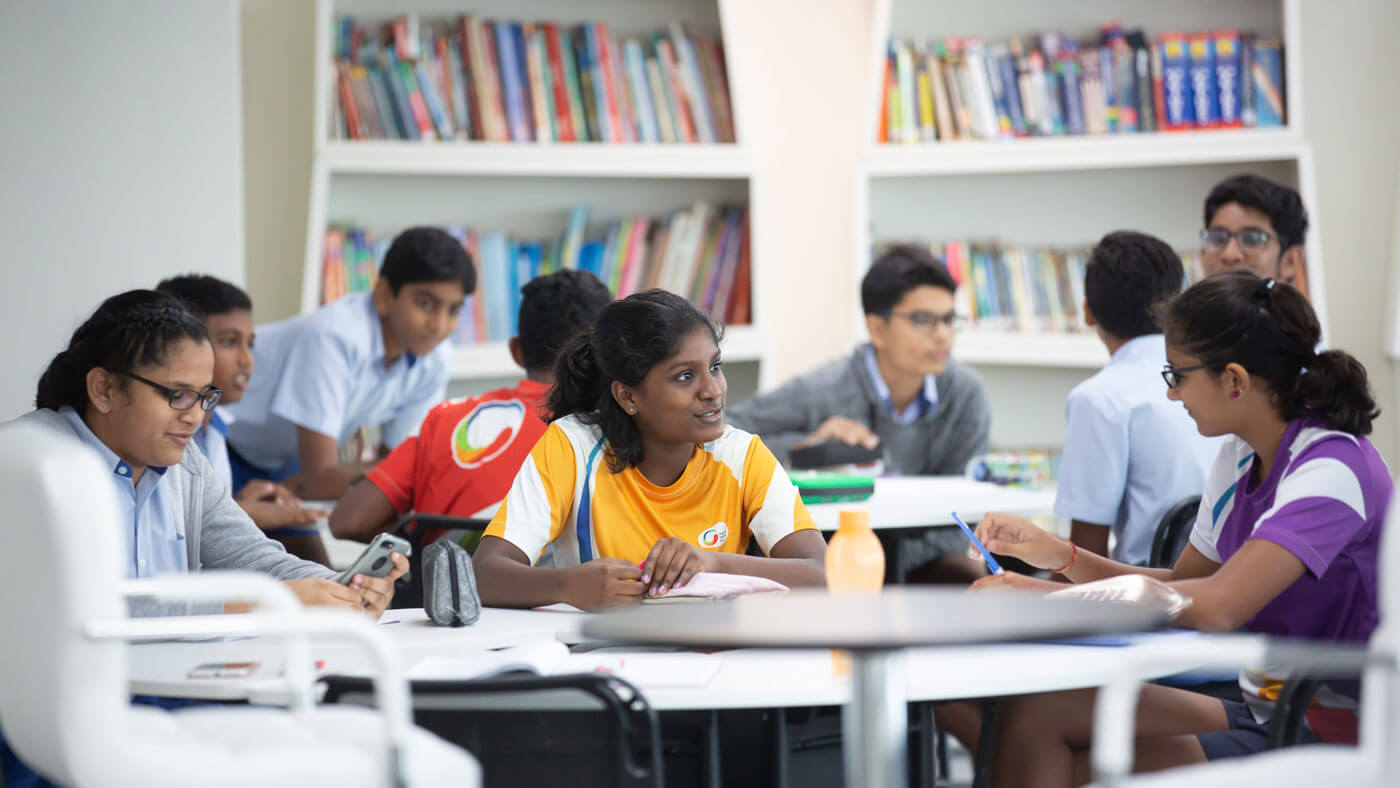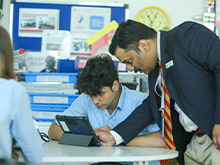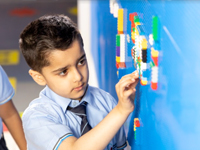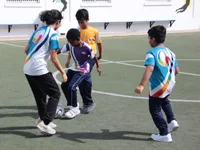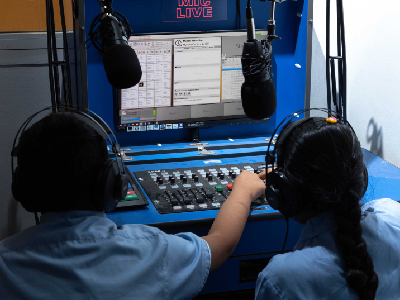Engaging with high school students is one of the most significant challenges for teachers. Tethering at a crucial stage in life, high school students grapple with hormonal and physical changes, which gives them newer challenges to overcome daily. Moreover, the stakes are even higher for such students when it comes to engaging in classroom lectures because they need to focus on their grades to get into a prestigious college or university and pursue their dreams.
High School students going through essential cognitive and developmental stages prefer non-academic and fun-oriented activities over classroom engagement revolving around academics and textbook learnings. They are always looking for something beyond the scope of the four walls.
When puberty hits, high school students experience considerable changes – biological, behavioural, and social.These changes have a direct impact on the academic performance of a student. Research has shown that high school students of 11-12 years of age — who are at an early stage of puberty — are becoming less interested in school lectures.
No matter how difficult it gets, teachers must ensure that the student stays on the right path. A teacher who is considerate about their student’s engagement can make a huge difference in their life, and provide them with a sense of purpose in a routine they may find tedious, or uninspiring.
Moreover, students are not the only ones benefiting from this engagement. Improved engagement will also improve the response of a student in the classroom. It eventually creates an ecosystem where even the teachers are entirely comfortable. Classes are no more a scheduled lecture but an opportunity to share knowledge with the students to help them pursue their dreams.
However, improving student engagement is cumbersome, especially when it comes to engaging with high school students. Adolescents, as well as pre-adolescent, high school students, are reluctant to listen to their teachers or even their parents. Therefore, teachers must step in to take responsibility for their students’ academic success by going beyond textbook learning and focussing on experiential and sensory learning.
The ever-changing engagement strategies further add to this dilemma. The pen and paper approach of lectures fails to engage students of the 21st century. Technology dominates all other areas of their lives, and teachers are left playing catch up. Incorporating modern methods will bridge this massive gap and make learning exciting and enjoyable.
Rather than focusing on notes-based lectures, a teacher is expected to adopt the latest practices proven to be highly effective. Thinking outside the box is a surefire way of developing the students’ interest. Using infographics, pre-recorded sessions, animated videos, practical learning, and other such practices will increase the students’ involvement. The idea is to promote an engagement-based learning model where the students are actively involved in the classes which would pique their interest in a particular subject. For example, taking the lecture outside the scope of the four walls of a classroom.
Mentioned below are some techniques that can help a teacher in strengthening their engagement with the students:
1. Student engagement
Strengthening engagement is not restricted to just the teacher-student interaction but also includes how the students engage with each other. Increasing student participation, creating groups for lesson-related activities, and promoting an environment where the students share their knowledge can potentially transform a boring classroom into a place where students enjoy learning.
2. Individual attention
The teacher must provide individual attention to the students and analyze each of their performances. But, this doesn’t necessarily mean that a teacher has to interact with all the students daily. On the contrary, acknowledging the students’ value and making them feel special is all it takes to gain their respect. Teachers can have an open hour once a week to encourage conversations without judgment. Such students are more likely to follow a teacher’s instructions because they feel special in the class.
3. Engage with technology
The current generation is tech-savvy. Mobile-based applications or internet-based assignments intrigue them. Rather than the traditional system of classroom and homework, a teacher should include modern techniques of teaching. Showing videos to explain a particular concept or creating a social media group where the teacher can share fun facts about the subject is a great way to start.
4. Relevancy
Students are more likely to develop an interest in the lectures if they can relate the lessons with their life. Therefore, explaining relevant topics and giving real-life examples to explain a concept is more likely to strengthen student engagement in the classroom. A teacher should show them the bigger picture of how these lectures are going to help them in the long run. For this, the teacher can work on molding the students’ perspective from an examination point of view to future endeavors.
5. Frequent assessments
Assessments no longer have to be postponed till the month-end or the semester-end. Instead, a teacher can take evaluations whenever they feel the need for it. Creating a schedule for frequent assessments is also an efficient method of increasing student engagement.
While taking frequent assessments keeps the students involved in your lectures, it also allows you to continually analyze their performance, helping them to develop a better relationship with teachers, and by extension, maybe even the parents.
6. Problem-solving
If there is one thing that a high school student likes, it is solving a problem. In the high school stage, the students’ inclination is toward challenging themselves. Giving them a challenge, and allowing them to explore their skill set is one way to engage. While solving challenges, a teacher can also help the students through their expertise, creating a stronger bond between the teacher and the student.
7. Movements
We have all been through high school, and we have all been sleepy in lectures. Being exhausted is a part of the high school journey. Therefore, learning the power of movements should be at the top of every high school teacher’s priority list. Research has shown that physical activity tends to increase the involvement of students. Teachers can combat yawning and droopy eyes with a few seconds of hand-clapping and finger-snapping.
8. Flipped classroom
A flipped classroom is a fast-growing trend. Essentially, it revolves around the fact that a high school student is capable of self-learning. Therefore, a teacher can provide some video tutorials or pre-recorded sessions to prepare students for a particular topic. After the students go through these lectures, they will easily relate to what you teach in the classroom. Hence, they will be more involved in your class.
9. Gamification
A great way to add fun to a high school student’s learning is gamification, which includes playing games like educational bingo. Games are not just for developing students’ interest but they are also a highly effective learning method. Students derive a deeper understanding of a given topic through games, enhancing their retention power and consecutively resulting in better grades.
10. Additional efforts
Even after using all these engagement techniques, some students will probably still not follow the instructions or listen to the lectures. This behavior in a high school student is more common than many parents can imagine – while experienced teachers deal with it every year. Therefore, in such a scenario, the teacher has to be ready to go the extra mile. The teacher has to identify such students, learn about their likes and dislikes, reach out to their parents, and if needed, take additional classes to cover essential topics. Even if the students do not appreciate you for such actions initially, they will eventually start respecting you. When they see their progress, they will respect you for your efforts.
If we consider the amount of burden on a high school student’s shoulders, the need for adopting enhanced engagement strategies will become more apparent. Between developing emotional maturity and continually worrying about their future, these students are in dire need of an international school environment where they feel comfortable.
Although high school students are challenging to handle, it is the teacher’s responsibility to show them the right path or guide them towards understanding the need for attention at school. Inculcating engagement strategies to create a fun learning environment is just one of the many steps that can make a huge difference in a student’s life. As a side benefit, this increased student engagement will also make the teaching life fun for the teachers and give them the satisfaction of ensuring a brighter, possibly a more successful, future for their students.


